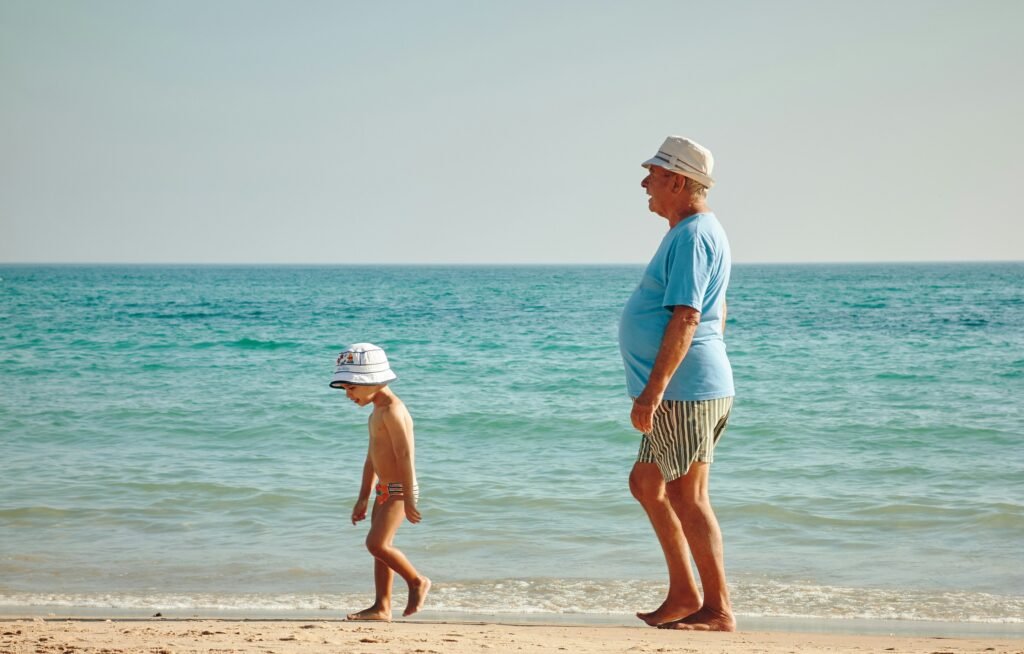Have you ever heard of Darwin’s definition of fitness and wondered what it means? How does “survival of the fittest” play a role in the natural world? Let’s explore Darwin’s theory of evolution and dive into the concept of fitness to understand how species adapt and thrive in their environments.

Understanding Darwin’s Theory of Evolution
Darwin’s theory of evolution revolutionized the way we think about the natural world. Genetic variation, natural selection, and adaptation are key components of Darwin’s theory that explain how species change over time. By studying the diverse forms of life on Earth, Darwin proposed that species evolve to suit their environments through the process of natural selection.
What is Darwin’s theory of evolution?
Darwin’s theory of evolution centers around the idea that all living organisms are descended from a common ancestor. Over time, species change and adapt to their environments through natural selection, where individuals with favorable traits are more likely to survive and reproduce. This leads to the accumulation of advantageous traits in a population over generations, ultimately resulting in the formation of new species.
The Concept of Fitness in Evolutionary Biology
In the context of evolution, fitness refers to an organism’s ability to survive and reproduce in a specific environment. Fitness is a crucial determinant of an organism’s evolutionary success, as individuals with higher fitness are more likely to pass on their genes to the next generation. Let’s delve deeper into the concept of fitness and explore its significance in evolutionary biology.
What is fitness in evolutionary biology?
Fitness can be defined as the relative ability of an organism to survive and pass on its genes to the next generation. It is a measure of an organism’s reproductive success and is influenced by various factors such as environmental conditions, competition, and predation. High fitness indicates that an organism has traits that are well-suited to its environment, increasing its chances of producing offspring.
Types of Fitness
There are different types of fitness that contribute to an organism’s overall reproductive success. Each type of fitness plays a distinct role in shaping the genetic makeup of populations and driving evolutionary change. By understanding the various types of fitness, we can gain insight into how species adapt and evolve over time.
Individual fitness
Individual fitness measures an organism’s ability to survive and reproduce in its specific environment. It is determined by factors such as reproductive success, lifespan, and the number of offspring produced. Individuals with higher individual fitness are more likely to pass on their genes to the next generation, contributing to the evolution of the population.
Reproductive fitness
Reproductive fitness specifically focuses on an organism’s ability to produce viable offspring that can survive and reproduce. It takes into account factors such as mating success, fertility, and parental care. Organisms with high reproductive fitness are more successful at passing on their genes to future generations, ensuring the continuation of their genetic lineage.
Inclusive fitness
Inclusive fitness considers not only an organism’s own reproductive success but also the reproductive success of its relatives. It takes into account the genetic relatedness between individuals and the benefits of helping relatives reproduce. Inclusive fitness explains behaviors such as altruism and cooperation, where individuals may sacrifice their own reproductive success to enhance the reproductive success of their relatives.
Factors Affecting Fitness
Various factors influence an organism’s fitness and its ability to survive and reproduce in its environment. From physical traits to behavioral adaptations, organisms evolve in response to selective pressures that shape their fitness. By examining the different factors that affect fitness, we can gain a better understanding of how natural selection drives evolutionary change.
Genetic variation
Genetic variation is a key factor that influences an organism’s fitness and evolutionary success. Variation in genes leads to differences in physical traits and behaviors that can impact an organism’s survival and reproduction. Genetic diversity within a population allows for adaptation to changing environmental conditions and increases the overall fitness of the species.
Environmental conditions
Environmental conditions play a significant role in determining an organism’s fitness. Factors such as temperature, precipitation, food availability, and habitat quality can affect an organism’s ability to survive and reproduce. Organisms that are well-adapted to their environment have higher fitness and are more likely to pass on their genes to future generations.
Competition
Competition for limited resources is a driving force in shaping an organism’s fitness. Intraspecific competition between individuals of the same species and interspecific competition with other species can influence an organism’s access to food, mates, and territory. Individuals that are better able to compete for resources have higher fitness and are more successful in reproducing.
Predation
Predation is another factor that affects an organism’s fitness by influencing its risk of mortality. Predators play a key role in the natural selection of traits that enhance an organism’s ability to avoid predation. Organisms with adaptations such as camouflage, warning coloration, or defensive structures have higher fitness and are more likely to survive encounters with predators.

Adaptation and Fitness
Adaptation is the process by which organisms evolve traits that increase their fitness in a specific environment. Through natural selection, individuals with beneficial adaptations are favored and pass on their genes to subsequent generations. Adaptations may be morphological, physiological, or behavioral, allowing organisms to thrive in diverse habitats.
Morphological adaptations
Morphological adaptations are physical traits that help an organism survive and reproduce in its environment. These adaptations can include body shape, size, coloration, or structural features that enhance an organism’s ability to obtain food, avoid predators, or attract mates. Morphological adaptations are shaped by selective pressures that influence an organism’s fitness.
Physiological adaptations
Physiological adaptations are internal mechanisms that allow an organism to function effectively in its environment. These adaptations may involve biochemical processes, metabolic functions, or responses to environmental stimuli. Physiological adaptations help organisms maintain homeostasis, regulate body temperature, or tolerate extreme conditions, ultimately enhancing their fitness.
Behavioral adaptations
Behavioral adaptations are actions or responses that increase an organism’s survival and reproductive success. These adaptations can involve feeding strategies, mating behaviors, social interactions, or communication methods. Behavioral adaptations allow organisms to optimize their fitness by adjusting their behavior to changing environmental conditions or social dynamics.
Evolutionary Significance of Fitness
Fitness plays a critical role in driving evolutionary change and shaping the genetic diversity of populations. Individuals with higher fitness are more successful at passing on their genes, leading to the spread of advantageous traits within a population. Over time, natural selection acts on variations in fitness, resulting in the adaptation of species to their environments and the formation of new species.
Evolutionary arms race
The concept of an evolutionary arms race illustrates the dynamic interplay between predators and prey, parasites and hosts, or competitors within an ecosystem. As organisms evolve adaptations to increase their fitness, other organisms must also adapt in response, leading to a cycle of escalating traits. This evolutionary competition drives species to continually evolve and diversify to outcompete their counterparts.
Evolutionary trade-offs
Evolutionary trade-offs are compromises that organisms make between different aspects of fitness. For example, an organism may invest resources in growth and reproduction, which can impact its ability to defend against predators or survive harsh conditions. Trade-offs help maintain a balance between competing demands on an organism’s energy and resources, shaping its overall fitness in relation to its environment.

Application of Fitness in Ecology and Conservation
The concept of fitness has practical applications in ecology and conservation by helping researchers understand how species interact with their environments and respond to changing conditions. By studying the fitness of organisms in natural populations, scientists can make informed decisions to protect biodiversity and preserve ecosystems for future generations.
Conservation genetics
Conservation genetics uses the principles of fitness to assess the genetic health of populations and prioritize conservation efforts. By measuring the genetic diversity, effective population size, and overall fitness of endangered species, conservationists can develop strategies to prevent extinction and promote genetic resilience. Conservation genetics aims to maintain adaptive potential in populations to ensure their long-term survival.
Habitat restoration
Habitat restoration projects often focus on enhancing the fitness of species within degraded ecosystems by restoring critical habitats and reducing threats to biodiversity. By creating healthy ecosystems that support high fitness levels for key species, restoration efforts can promote population growth, genetic connectivity, and ecosystem resilience. Habitat restoration aims to improve the overall fitness of species and benefit entire ecosystems.
Climate change adaptation
Climate change poses a significant challenge to the fitness of organisms worldwide, as changing environmental conditions may disrupt natural habitats and alter species distributions. By studying the impacts of climate change on species fitness, researchers can develop strategies for adaptation and mitigation to preserve biodiversity. Climate change adaptation efforts aim to enhance the resilience of species to changing conditions and protect critical habitats.
Conclusion
Darwin’s definition of fitness and the concept of “survival of the fittest” provide valuable insights into how species adapt and evolve in response to their environments. By understanding the role of fitness in evolutionary biology, we can appreciate the complex interactions between organisms and their surroundings. As we continue to study the mechanisms of natural selection and adaptation, we uncover the remarkable diversity of life on Earth and the extraordinary ways in which species thrive and persist over time.